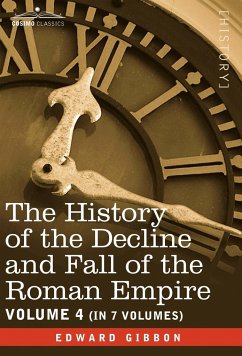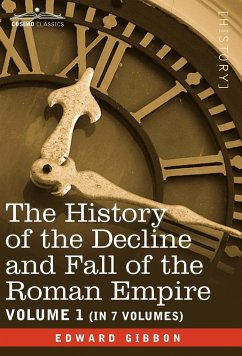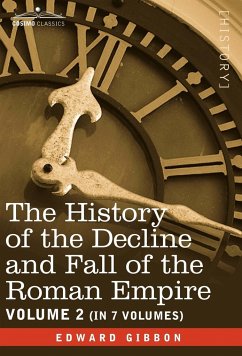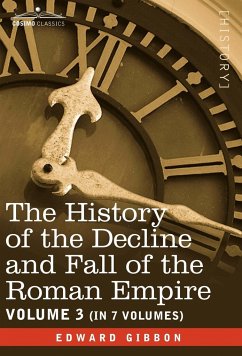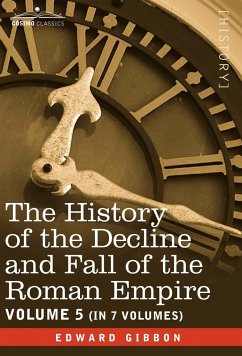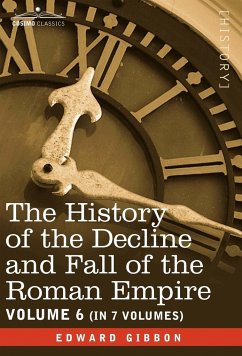The History of the Decline and Fall of the Roman Empire is Edward Gibbon's magnum opus, written and published over a 13-year period beginning in 1776. It not only chronicles the events of the downfall starting with the end of the rule of Marcus Aurelius, but proposes a theory as to why Rome collapsed: the populace, Gibbon theorizes, lost its moral fortitude, its militaristic will, and its sense of civic duty. History is considered a classic in world literature, and Gibbon is sometimes called the first "modern historian" for his insistence upon using primary sources for his research. Many scholars today still use his highly regarded work as reference. In this last of seven volumes, readers will find Chapter 64 ("Moguls, Ottoman Turks") through Chapter 71 ("Civil Prospect of the Ruins of Rome in the Fifteenth Century"), which cover the establishment of the Mogul empire and their conquests of China, Persia, Anatolia, and Siberia; the origin of the Ottomans; the establishment of the Ottomans in Europe; the history and life of Timour (Tamerlane); the siege of Constantinople by Amurath II; the reign of John Palaeologus II; the invention of gunpowder; the continued struggles between the Greeks and Latins for influence in the Eastern Roman Empire; the reign of Constantine (the last emperor of the Eastern Roman Empire); the reign of Mahomet (Mehmed) II of the Ottoman Empire; the siege of Constantinople; a summary of the state of Rome since the 12th century; the life of Petrarch; the Great Schism of the West; and the final decay of Rome in the 15th century. Also included in this volume is a complete index to the seven-volume series, English parliamentarian and historian EDWARD GIBBON (1737-1794) attended Magdelan College, Oxford for 14 months before his father sent him to Lausanne, Switzerland, where he continued his education. He published Essai sur l'Étude de la Littérature (1761) and other autobiographical works, including Mémoire Justificatif pour servir de Réponse à l'Exposé, etc. de la Cour de France (1779).
Bitte wählen Sie Ihr Anliegen aus.
Rechnungen
Retourenschein anfordern
Bestellstatus
Storno


